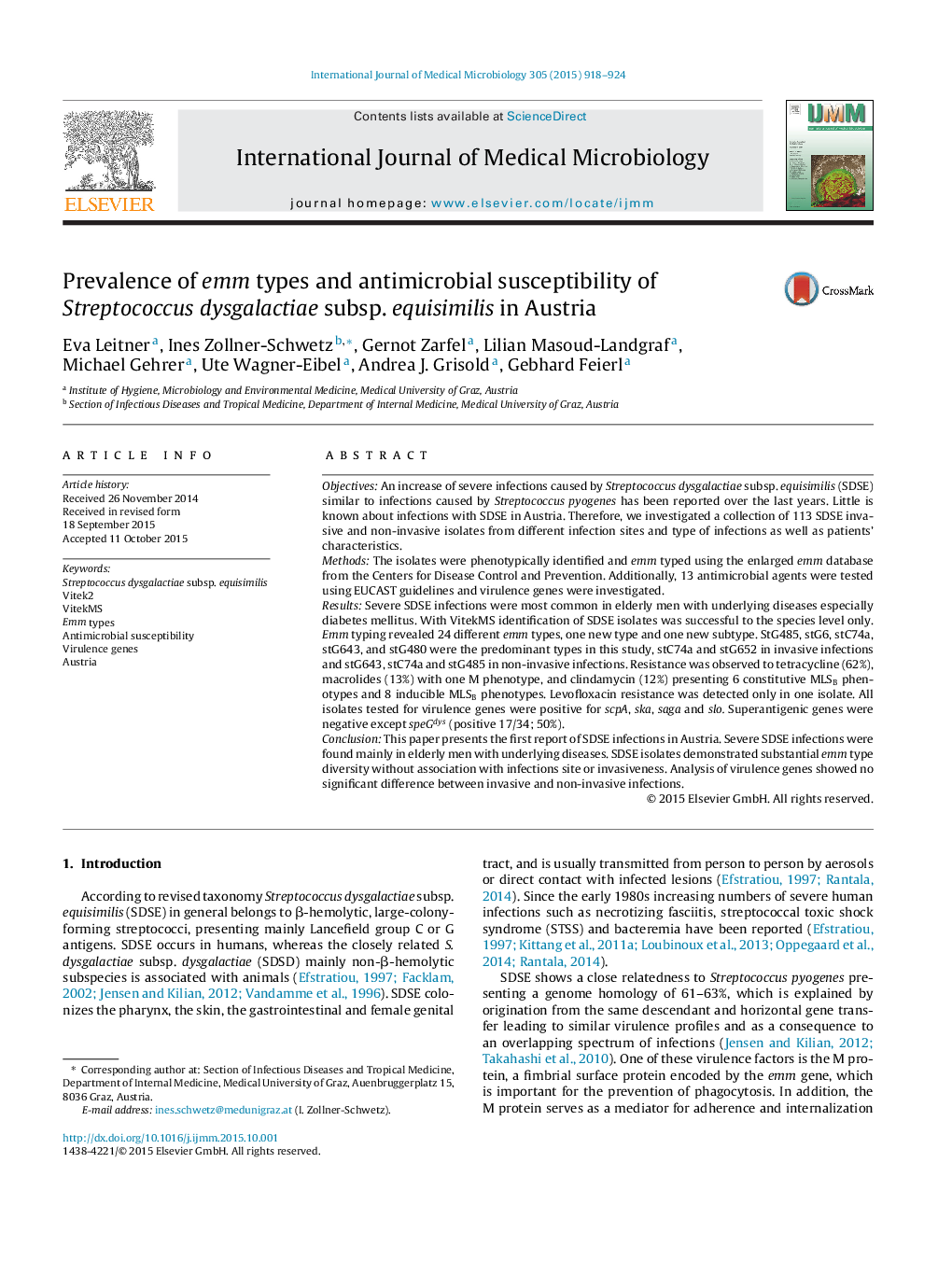| کد مقاله | کد نشریه | سال انتشار | مقاله انگلیسی | نسخه تمام متن |
|---|---|---|---|---|
| 2053999 | 1543684 | 2015 | 7 صفحه PDF | دانلود رایگان |

ObjectivesAn increase of severe infections caused by Streptococcus dysgalactiae subsp. equisimilis (SDSE) similar to infections caused by Streptococcus pyogenes has been reported over the last years. Little is known about infections with SDSE in Austria. Therefore, we investigated a collection of 113 SDSE invasive and non-invasive isolates from different infection sites and type of infections as well as patients’ characteristics.MethodsThe isolates were phenotypically identified and emm typed using the enlarged emm database from the Centers for Disease Control and Prevention. Additionally, 13 antimicrobial agents were tested using EUCAST guidelines and virulence genes were investigated.ResultsSevere SDSE infections were most common in elderly men with underlying diseases especially diabetes mellitus. With VitekMS identification of SDSE isolates was successful to the species level only. Emm typing revealed 24 different emm types, one new type and one new subtype. StG485, stG6, stC74a, stG643, and stG480 were the predominant types in this study, stC74a and stG652 in invasive infections and stG643, stC74a and stG485 in non-invasive infections. Resistance was observed to tetracycline (62%), macrolides (13%) with one M phenotype, and clindamycin (12%) presenting 6 constitutive MLSB phenotypes and 8 inducible MLSB phenotypes. Levofloxacin resistance was detected only in one isolate. All isolates tested for virulence genes were positive for scpA, ska, saga and slo. Superantigenic genes were negative except speGdys (positive 17/34; 50%).ConclusionThis paper presents the first report of SDSE infections in Austria. Severe SDSE infections were found mainly in elderly men with underlying diseases. SDSE isolates demonstrated substantial emm type diversity without association with infections site or invasiveness. Analysis of virulence genes showed no significant difference between invasive and non-invasive infections.
Journal: International Journal of Medical Microbiology - Volume 305, Issue 8, December 2015, Pages 918–924